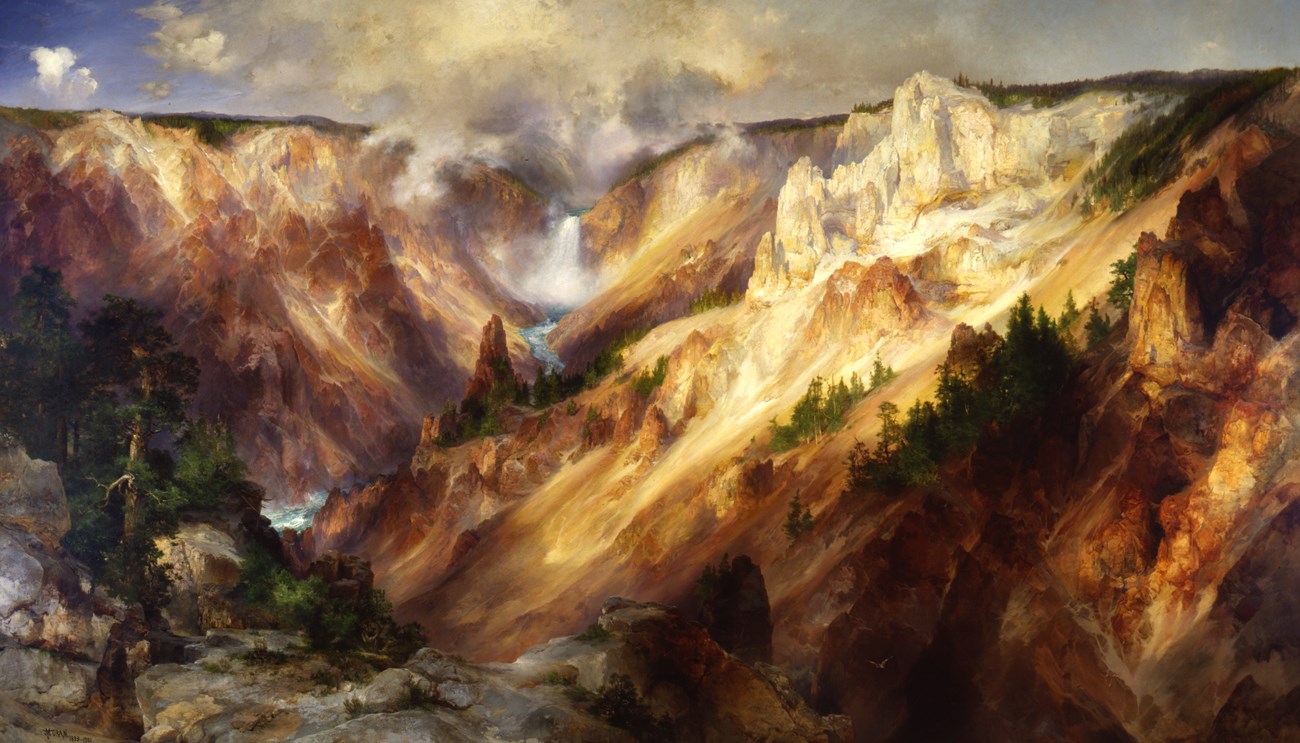
Smithsonian
Introduction
There are many special meanings and individual values that society places on America's Geologic Heritage. By including a broad range of values in geologic heritage planning, we will help to make geology meaningful to more people. Connecting with people in this way will contribute to keeping geology relevant in the 21st century.
Selected Values Typologies
Investigations in to the values associated with geologic heritage and protected areas are available from a variety of sources. The most often cited value system pertaining specifically to geologic heritage is the one prepared by Murray Gray, author of Geodiversity: Valuing and Conserving Abiotic Nature. There are several other lists of protected area and ecosystem values by various conservation organizations, some of which are included here for consideration.
Murray Gray
From: Gray, M. (2004) Geodiversity: Valuing and Conserving Abiotic Nature. John Wiley & Sons, LTD., West Sussex, England.
- Intrinsic value, abiotic nature free of human valuation
- Folklore
- Archaeological /Historical
- Spiritual
- Sense of Place
- Local landscapes
- Leisure activities
- Remote appreciation
- Voluntary activities
- Artistic inspiration
- Energy
- Industrial minerals
- Metallic minerals
- Construction minerals
- Gemstones
- Fossils
- Soil
- Platforms
- Storage and recycling
- Health
- Burial
- Pollution control
- Water chemistry
- Soil functions
- Geosystem functions
- Ecosystem functions
- Scientific discovery
- Earth history
- History of research
- Environmental monitoring
- Education and training
Geological Society of America
Position Statement: Geoheritage. GSA Today. April/May 2011
- Scientific
- Educational
- Cultural
- Aesthetic
Harmon & Putney
From: Harmon, D. A. Putney, 2003.The Full value of Parks: From Economics to the Intangible. Rowman &Littlefield Publishers, INC. MD. USA.
- Recreational values
- Spiritual values
- Cultural values
- Identity - natural sites that link people to their landscape through myth, legend or history
- Existence values
- Artistic values
- Aesthetic values
- Educational values
- Research and monitoring values
- Peace values
- Therapeutic values
Chape and Spalding
From: Chape, S. M. Spalding, M. Jenkins (ed) 2008.The World's Protected Areas: Status, Values and Prospects in the 21st century. University California Press in association with UNEP-WCMC. Berkely and Los Angeles, CA.
- Scientific research
- Wilderness Protection
- Preservation of species and genetic diversity
- Maintenance of environmental services
- Protection of specific natural and cultural features
- Tourism and recreation
- Education
- Sustainable use of resources from natural ecosystems
- Maintenance of cultural and traditional attributes
- Direct use values and benefits
-
- Recreation/tourism
- Extraction of non-renewable energy sources
- Scientific research
- Indirect use benefits and option values
-
- Climate influences
- Water services in erosional control
- Coastal processes
- Wider ecological influences
- Genetic resources
- Refugia
- Intangible values of protected areas
-
- Recreational values
- Spiritual values
- Cultural values
- Identity values
- Existence values
- Artistic values
- Aesthetic values
- Educational values
- Peace values - fostering interregional stability through shared management of intercultural spaces between modern and traditional and other divided cultures, and peace between nature and society
- Therapeutic values
Lockwood
From: Lockwood, M., G. Worboys, A. Kothari. 2008.Managing Protected Areas: a global perspective. IUCN. Earthscan, James and James LTD. UK, USA.
- "An understanding of the values and benefits of protected areas is of fundamental importance to protected areas. Values give meaning to protected areas - they provide motivation for their creation, give direction to their management and allow for evaluation of their effectiveness."
- Citing Najder, 'value' has a range of meanings in three basic categories
-
- Value as the worth of something
- Value as a property of a thing
- Value of an idea or feeling
- Citing Putney for the World Commission on Protected Areas:
-
- Recreation values
- Spiritual values
- Cultural values
- Identity values
- Existence values
- Artistic values
- Aesthetic values
- Educational values
- Research and monitoring values
- Peace values
- Therapeutic values
- Citing Dearen and Rollins (with their analogies)
-
- Aesthetic (art gallery)
- Wildlife viewing (zoo)
- Historical(museum)
- Spiritual Recreation (playground)
- Tourism (factory)
- Education (schoolroom)
- Science (laboratory)
- Ecological capital (bank)
- Ecological process (hospital)
- Ecological benchmarks (museum)
[Table] 4.1 Classification of protected area values (pg103)
Category: Intrinsic value- Examples: Fauna, Flora, Ecosystems, Land and seascapes
- Examples: Plant products, Animal Products, Recreation and tourism, Representations (films), Historic sites and artifacts, Scientific knowledge and research, Education
- Examples: Human life support, Non-human life support, Water quality and quantity, Air quality and quantity, Fishery protection, Agriculture protection, Protection of human settlements
- Examples: Culture Identity, Spiritual meaning, Social well-being, Bequest for future generations
- Examples: Satisfaction (existence), Satisfaction (experiential), Physical health, Mental health, Spiritual well-being
Related Links
Last updated: November 18, 2021
